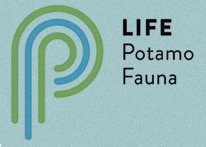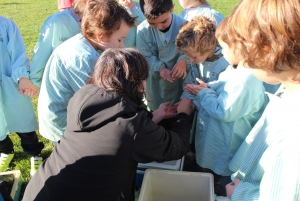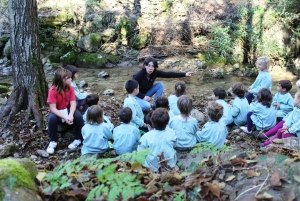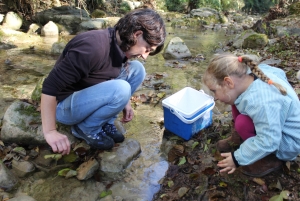The basins of the Ter and Muga are repopulated with native crayfish
This tuesday a releasing activity of native crayfish under the LIFE Potamo Fauna, was attended by students of Lluís Castells school of Riudaura. The breeding Center in Olot of native river crayfish has doubled the production and this year will release 1,500 suitable individuals for its repopulation.
The European LIFE Potamo Fauna "Conservation of river fauna of Community interest in the Natura 2000 network sites of the Ter, Fluvià and Muga basins," has several aims; one of its main objectives is the conservation and recovery of the White-clawed Crayfish (Austropotamobius pallipes), a species seriously threatened. With this premise, it carries out releases of captive-bred specimens at the Breeding Center of native crayfish in Olot. During this fall is expected to release about 1,500 individuals. During the today’s releasing students of Lluís Castells school of Riudaura have participated in the activity. The crayfish have been released in two sectors of the Riudaura stream. Until 2017, the year of project completion, the reinforcements will be done in eight sectors of the following areas Natura 2000 network of Girona; Upper Garrotxa-Massif of Les Salines, Volcanic Region of La Garrotxa, Riparian habitats of the Upper Ter, Transversal Catalan System, River Fluvià, River Llémena, Mountains of Rocacorba-Puig de la Banya del Boc and Xuclà and Riudelleques streams.
The native crayfish species was common in most water courses in southern Europe. In the late seventies an epizootic fungus Aphanomyces astaci of crayfish plague occurred, which caused a drastic decrease of the population. This was introduced by some invasive crayfish, a species that has spread quickly around rivers of the country. The expansion of the diseases has been accentuated by the recent expansion of two exotic crayfish, both of American origin and carriers of diseases.
In the basin of the river Fluvià over 20 years we are working with the knowledge of this species and 10 recovery plans. In 2004 the Center for Reproduction of native crayfish was created in Olot, managed by the technical team of the Garrotxa Volcanic Zone Natural Park. In the framework of the LIFE Potamo Fauna it has been able to bring improvements to the facilities to minimize diseases such as Saprolegnia and thus increase the production of crayfish. This year, the center has reaching 1,500 individuals. Today there is a great stock of individuals from different watersheds in the country, and also juveniles from its captive breeding and will be useful to increase the number of breeding crayfishes. The units are players from the three major basins in the province of Girona (Fluvià, Ter and Muga), thus preserving the genetic diversity of each river basin and can work on finding resistance to the diseases depending genetics of each population. With the repopulation it is expected in the short term to avoid the disappearance of 32 existing populations in the area of action and to establish between 15 and 20 new population in areas where the species has disappeared.
This work is conducted jointly by the Department de Territori i Sostenibilitat off the Generalitat de Catalunya, through the Garrotxa Volcanic Zone Natural Park, Forestal Catalana and the Consorci de l’Estany through LIFE Potamo Fauna, which also are partners with the Consorci del Ter, Amics de les Tortugues de l’Albera and the Universidad del País Vasco-Euskal Herriko Unibertsitabea.
LIFE Fauna Potamo is a four-year project (2014-2017) which is financed by European funds by 50%. Apart from the White-clawed Crayfish also works in the conservation of other endangered species as the Naiad Unio elongatulus, European Pond Turtle (Emys orbicularis), and two species of Narrow-mouthed Wnorl Snail (Vertigo angustior and Vertigo moulinsiana). The projects also works in the fighting against various alien invasive species.




















